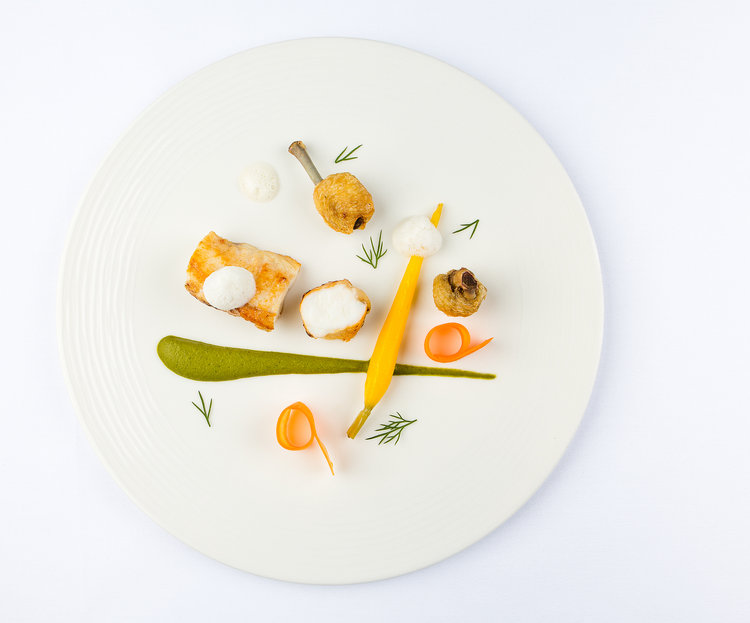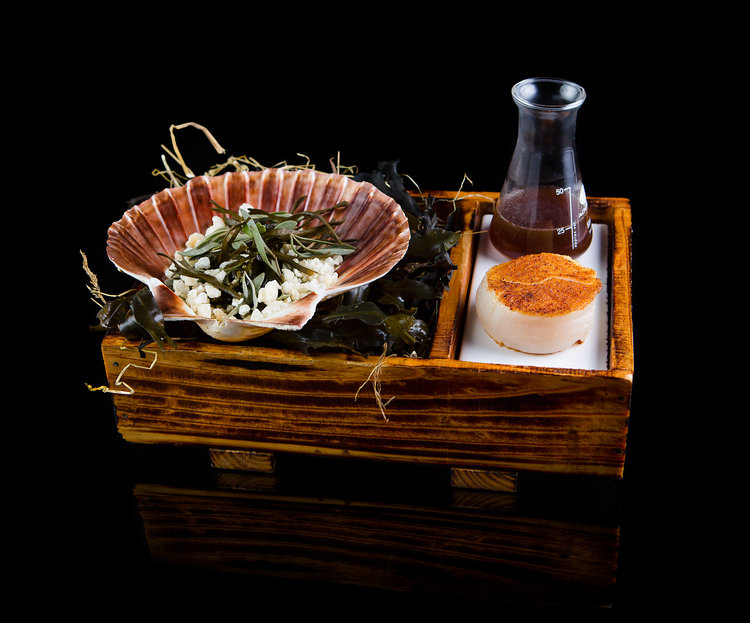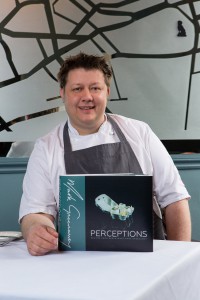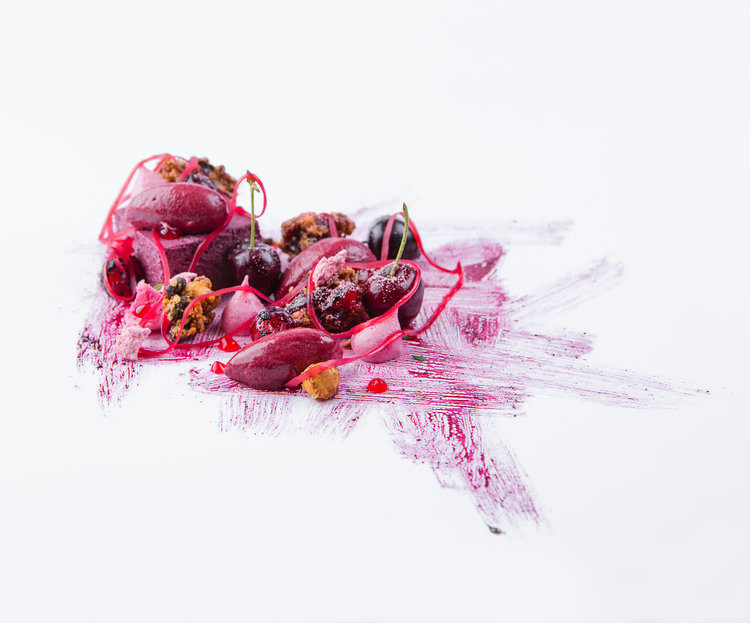
Yesterday, the 5pm Dining blog found itself at Restaurant Mark Greenaway for the launch of the chef’s first book: Perceptions.
A 256 page glossy production with spectacular photography by Paul Johnston of Copper Mango, it contains some 250 recipes which give a step-by-step and process-by-process guide to recreating some of Mark’s most famous dishes.
As well as the recipes, the book tells the stories of some of Mark’s favourite producers such as Hebridean Sea Salt and Gartmorn Farm who produce duck for Mark. It also follows his career from teenage pot washer at the Cartland Bridge Hotel in Lanark to chef proprietor of Restaurant Mark Greenaway in Edinburgh, proud holder of three AA Rosettes and familiar face from TV shows such as Great British Menu.
Sold in 16 countries
Perceptions has already been a huge success. The initial print run of 10,000 is almost all accounted for and a second print run is scheduled for the next couple of weeks. The book has sold in sixteen countries from France to South Korea.
To support the book, Mark will be doing an October tour of restaurant takeovers at many of the venues which feature on his CV. Details are still being worked on but the dates will be announced on his restaurant website.
Book Festival
Mark will also be at the Edinburgh International Book Festival this August. Val McDermid, the celebrated crime writer and regular customer at Restaurant Mark Greenaway will be chatting to Mark about his book, kitchens, cuisine and writing.
The 5pm Dining blog sat down with Mark and had a blether about his book, his career and the perception of Scottish cuisine.

How did the book come about?
MG: I was in Bangkok four or five years ago with VisitBritain. As an ambassador for British food, I had to give talks to journalists from all over the world about the perception of British food.
I asked them what their perception of British food was and they all came out with prawn cocktail, shepherd’s pie, deep fried Mars bars, fish ‘n’ chips – all this stuff from the Seventies. Deep fried confectionery apart, there’s nothing wrong with those dishes but they are not representative of the state of modern British cooking.
Then I showed them pictures of Gordon Ramsay, Marco Pierre White, Jamie and Heston. They knew who they were but they didn’t associate those chefs with British food.
After that, I showed them pictures of British langoustines and lamb and so on. They said, ‘We buy those ingredients but we had no idea it came from you guys’. That’s where the idea of doing a book called Perceptions came from.
People around the world are aware that Scotland has all this great produce. They are less aware of the fact that we can also cook it very well. There is a gap in the perception between the food we produce and the quality of cooking in Scotland. By combining my recipes, these fantastic pictures from Copper Mango and stories of the producers whose ingredients I use in the kitchen, I hope this book will help close that gap.
Why is it important for you to feature the producers you work with?

MG: I need their produce to create my dishes. There are nine producers throughout the book. Some of them I have worked with for a year and a half; others I have worked with for more than twenty years. I’ve put them in the book and explained why we use their products. Restaurants don’t exist in a vacuum. We are part of a chain.
Do you think the recipes in the book are accessible for home cooks?
MG: The recipes are not domestic versions of my restaurant dishes. They are my restaurant dishes. However, each dish is broken down into its component parts and readers can choose how many components they want to do. For example, my pigeon, beetroot, hazelnut dish has seven different components but you might decide not to make it with beetroot fluid gel. Some of the dishes are complex. Others are quite simple.
The photography in the book is spectacular and presentation is always a big part of your dishes. Why?
MG: The emphasis on presentation comes from being a pastry chef. As a home cook, you can serve some beautiful Scottish strawberries with cream and people will love them. They expect more when they pay to eat in a restaurant.
Paul (Johnston of Copper Mango) and I worked for months on getting the photography right for the book. I had a very clear vision of how I wanted to feel. What we achieved is something far beyond what I had even imagined. Paul’s ability to capture my food still amazes me and he has been a vital ingredient in the production of this book.
You have been in the kitchen for almost a quarter of a century. How have your perceptions of the job changed?
MG: Back then, you didn’t get into the industry to write cookbooks or go on Great British Menu. There weren’t really any role models. Or at least, there weren’t any that I either knew of or identified with. I got into it because I thought it would be easy. How hard could it be: cooking lunch and dinner? I learned.

Were your family in the restaurant business?
MG: Not in the last couple of generations but, if you go back to my great granddad, he was a fifth generation butcher. I still have my great granddad’s knife. It started off like a machete. Now, it has been sharpened so many times there’s just a sliver of the blade left.
I had never eaten in a restaurant until I became a chef. I had never seen lobster or salmon. It just wasn’t a part of where I was from. I got chucked out of home economics at school. They wanted me to sew a football. I wanted to be a chef, not a seamstress.
Was there any one point in your career that you can point to as being hugely significant in your development as a chef?
MG: I moved to Sydney in 1999 when I was 23. They were doing food which was far in advance of what I had experienced up to that point. It was so modern. Talk about seasonal and local – they had that down to a T. They’re not going to import buffalo mozzarella or whatever from Italy. They’re going to make their own.
While there I worked for Darrell Felstead. Every plate leaving his kitchen had to be perfect 100% of the time. It was a tough kitchen to work in but the two years I spent there were also very rewarding.
